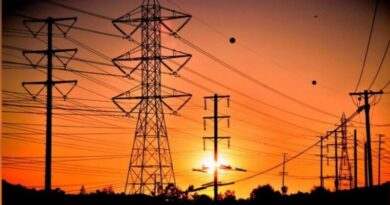Excess heat: a greener and safer route out of the energy crisis
According to a Danfoss Impact White Paper – Issue 2 – excess heat is the world’s largest untapped energy source.
A pandemic; extreme droughts, floods and heatwaves due to global warming; a devastating war in Europe; an energy crisis threatening to push the global economy into recession; and a tragic earthquake in Turkey and Syria. It does seem as though the world is staggering from one crisis to another, says Astrid Mozes, President Regions for Danfoss in her foreword to a Danfoss Impact White Paper arguing the merits of the untapped potential of reusing excess heat.
Cutting off Russian gas supplies has left Europe struggling to find alternatives: firing up old coal-fired power stations and signing new nuclear and liquefied natural gas (LNG) leases. “The tragic reality is that these measures delay and complicate the green transition the world so desperately needs,” says Mozes.
“There is a readily available, greener, cheaper and safer alternative,” she assures. In the European Union (EU) alone, excess heat, a by-product of most industrial and commercial processes, amounts to 2 860 TWh/year, almost corresponding to the EU’s total annual energy demand.
Excess heat can be reused to supply factories with heat and warm water or exported to neighbouring homes and industries. Using it is energy efficiency in its purest form.
Even though efficiency measures constitute the fastest and most cost-effective tool for mitigating the energy crisis, very few initiatives have pushed for better use of the vast amounts of wasted excess heat energy. Every time an engine or machine runs, it generates heat, as does keeping food fresh in cooling displays and freezers; or cooling the thousands of datacentres around the world. This excess heat is currently released into the air without any effort to reuse it.
The potential of energy efficiency is staggering so why are we not already seeing a massive global push for improving efficiency, one that includes the reuse of wasted energy?
Accelerating decarbonisation of the industrial sector
The industrial sector accounts for 39% of all global energy-related carbon emissions and with its current rate of energy efficiency improvements of 1.0% per annum, the sector in not on track to meet the Net Zero milestones, which require improvements of 3.0%.
The structural challenge for factories all over the world is to meet growing production demand while curbing emissions. In addition, the current energy crisis has placed the industrial sector under great pressure since the share of energy costs for production has increased significantly.
Efficiency progress is slowing in the industrial sector. From 2015 to 2020, the rate of improvement in the energy needed to produce each US$ of industrial value dropped from almost 2% per year from 2010-15 to just under 1%. Unharnessed potential in the industrial sector lies in using its excess heat. Excess heat from heavy industrial sites in the EU amounts to over 267 TWh/year. To put that into perspective, this is more than the combined heat generation of Germany, Poland and Sweden in 2021.
If we look only at waste heat sources over 95 °C and within 10 km of existing district heating infrastructure, there is already potential for 64 TWh. This corresponds to 12% of annually supplied energy in the EU through district heating infrastructure.
The potential is also striking when looking at specific urban areas. Take Essen in the Ruhr district in Germany, for example, where there are approximately 50 industrial sites in surrounding urban areas that produce 11.98 TWh of excess heat per year. This is roughly the amount energy required to heat 1.2-million homes, close to half the households in the area.
Three industries – cement, chemicals, and steel – account for almost 60% of industrial energy demand worldwide, with emerging and developing economies, particularly in China, accountable for 70 to 90% of these commodities. These heavy industries offer great potential in terms of efficiency since the excess heat from them is at high temperatures and easy to reuse.
The industrial sector, therefore, could shift the needle on global energy efficiency by reusing excess heat, and there are multiple ways to do this. Historically, excess heat from the likes of steel and power plants has been more widely reused due to the very high temperatures. But, as technology has evolved, many more sources of excess heat at lower temperatures have become viable.
Large cities without industry also have numerous sources of excess. Take datacentres, for example, which have become the lifeblood of today’s global digital economy, forming the backbone of the flow of information in cities and powering a range of activities from infrastructure and transport to retail and manufacturing.
Datacentres are also heavy consumers of electricity. In 2020, datacentres in the EU27 + UK consumed 100 TWh of electricity or around 3.5% of the region’s total electricity demand. According to the IEA, datacentres and data transmission networks now account for nearly 1% of all energy related greenhouse gas emissions worldwide. Conservative estimates from 2020 counted 1 269 datacentres across the EU2 + UK, producing a total of
95 TWh of accessible excess heat per year.
The same goes for supermarkets, an integral part of communities around the world and big energy consumers. On average, supermarkets consume 3-4% of the annual electricity production in industrialised countries. In the EU there is an excess heat potential from food retail stores of a total of 44 TWh a year.
Although this is significantly lower than the excess heat from industrial sites, it equates to the heat generated by Czech Republic and Belgium in 2021. Adding to this, excess heat from supermarkets can be tapped very easily and reused in the supermarkets themselves to heat the space or to provide warm water. All that is required is the deployment of existing, proven technologies. Also crucially in the current energy crisis, using excess heat can contribute significantly towards reducing a supermarket’s energy bills.
Wastewater treatment plants are yet another considerable source of excess heat, with a potential over the EU of 318 TWh/year of accessible waste heat.
Even though these sources of excess heat are not as large as the excess heat from industrial sites, together cities can reduce energy consumption in urban areas by a considerable amount. In Greater London, for example, 648 eligible excess heat sources have been identified, including datacentres, underground stations, supermarkets, wastewater treatment plants and food production facilities. The excess heat from these sources adds up to 9.5 TWh per year, roughly the amount of heat required to heat 790 000 households. And the top three sites alone could provide 4.8 TWh/year of heat.
Multiple ways to use excess heat
Excess heat recovery solutions range from very simple uses for heating purposes in the same unit, to advanced solutions such as district heating.
The simplest way to use this excess heat is to reintegrate the heat into the same processes, as in the case of reusing the rejected heat from freezers to heat up a store. Similarly, excess heat from heavy industries such as chemical and cement processing, which is at a much higher temperature, can be reused for process pre-heating within the existing plant. High temperature excess heat can be reused for both industrial processes and for domestic heat/hot water, while lower temperatures are more suitable for domestic space and water heating.
Installing a heat recovery unit is worth considering in almost all cases where ‘waste heat’ is produced. These units raise the overall energy efficiency of the plant by making the waste heat usable for processes at a similar or lower temperature level. And, by adding a heat pump, the temperature of the recovered heat can be increased further should a higher temperature application be available.
The potential of excess heat can be further advanced with sector integration, by connecting energy producers with energy consumers through a smart grid, for example. Large synergies can be realised when a producer of excess heat, for instance a datacentre, is located close to entities that can buy and use large amounts of the excess heat, for example, horticulture.
Looking at possibilities for such synergies between energy producers and users is called industrial cluster planning and contributes to decarbonising our energy system. Furthermore, the collaboration between nearby companies has been shown to provide economic benefits to both the buyer and the seller of the excess energy.
In many parts of the world, district energy systems supply homes and companies with heating as well as cooling. District energy is a collective system that supplies an entire area with heating or cooling. The district heating network taps into heat from a combination of sources, such as renewable sources – solar, geothermal and biomass – and fossil power plants, and distributes it through pipelines to end users in the form of heated water.
Today, the majority of global district heat production still relies on fossil fuels. According to the IEA, the world needs to double the share of green sources in district heating by 2030 to reach net zero. If we succeed, this will help slash carbon emissions from heat generation by more than one-third.
A key strengths of district energy systems is their capacity to integrate different heat sources that can push fossil fuels out of the heating and cooling mix. As district energy technology evolves, more and more green heat sources can tap into the system.
Today, the so-called 4th generation district energy system allows very low-temperature heat sources to be integrated into the district energy system to provide heating for new buildings that can operate at low-temperatures. Also, more and more green sources of energy can be used in district heating and cooling, which puts district energy systems at the centre of the green transition.
Many countries and cities are ripe to take advantage of the energy wasted in their backyard, particularly those with energy demand intensity, district energy systems, and large sources of excess heat.




